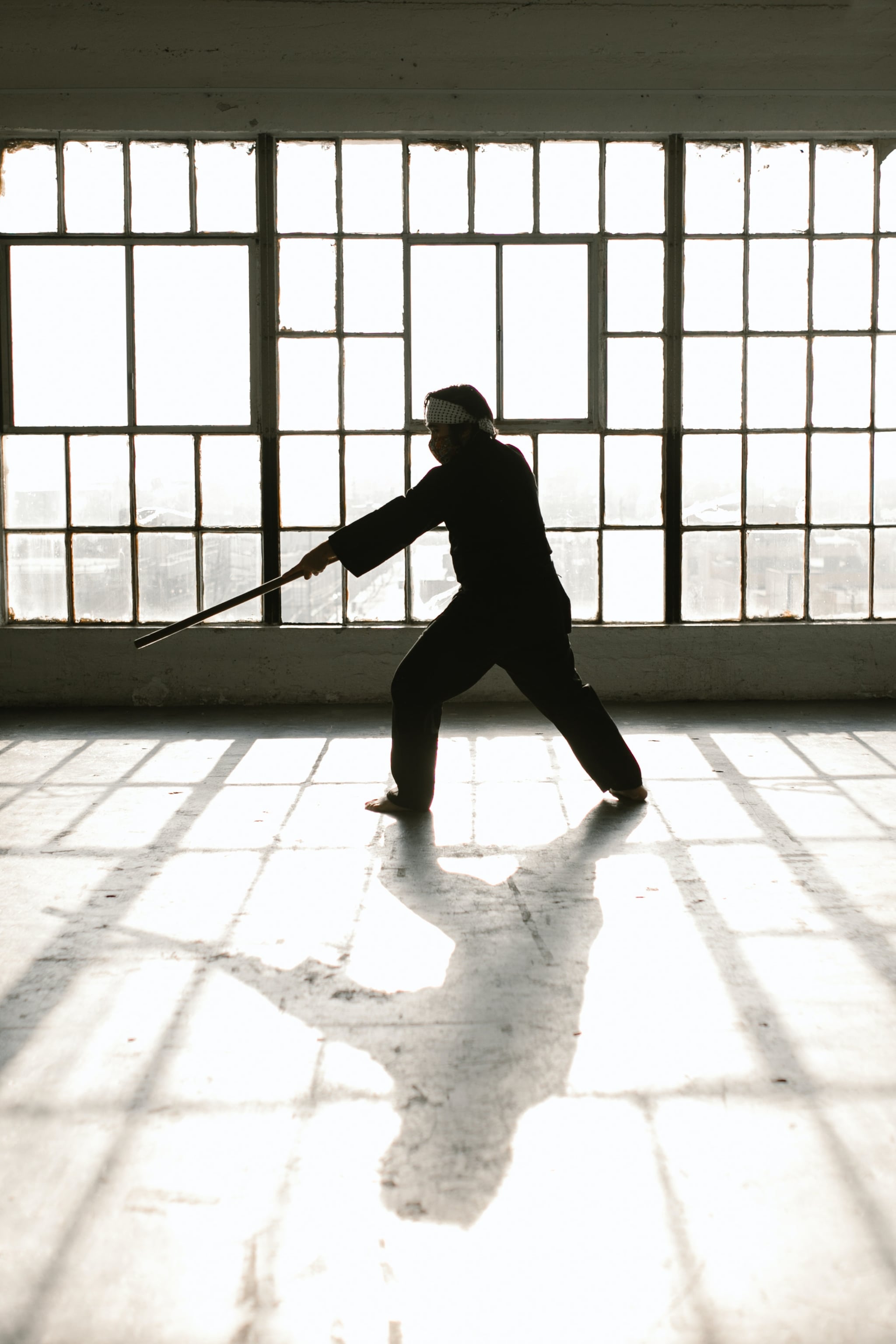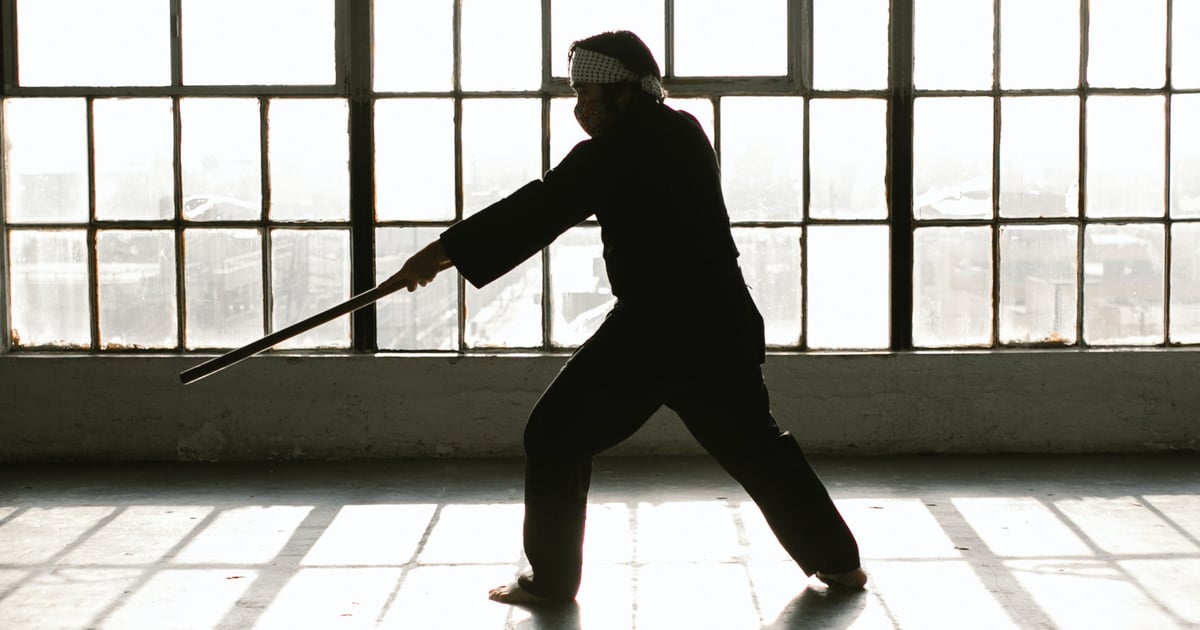Products You May Like

I was born in a nonbinary body. But because I didn’t have many examples of nonbinary people when I was growing up, I didn’t have the context to understand who I was. Everyone said I was a girl, and I assumed that some people, like me, lived their lives uncomfortable with their assigned gender.
From ages 7 to 10, I participated in a gymnastics class. Even then, I remember noticing and being confused by the gender lines that everyone else seemed to innately understand. It was mostly girls; the handful of boys in the class were considered brave, or strange. And I didn’t fit in anywhere. I always felt the kids in my class were looking at me scornfully, judging me for somehow failing to be a girl. Something — my tie-dye T-shirts, unshaven legs, unpolished nails, or maybe just my general social confusion — was wrong.
It wasn’t until I discovered a community that encouraged me to develop skills, discipline, and friendship completely separate from the idea of gender that I began to realize there might be another option.
That community was a karate class that I joined at age 11. Our class was a group of misfits: the bullies and the bullied, kids who talked too much and who didn’t talk at all. It was the first place where I felt like I was truly treated like everyone else, regardless of gender — and it was such a relief. We all went through the same warmups and exercises. And we all wore the same unisex uniform, at least at first.
To start, the kids used pads for sparring: gloves, foot pads, forearm guards. But as we reached puberty, the kids with growing chests also got chest protectors. Most of us didn’t like wearing them; the bulky foam got in the way of our movements. One of the instructors tried to talk us into using them, telling us a growing chest could be damaged by repeated blows. I felt flushed and embarrassed when she said that; I wanted my chest to stay flat as my body matured. Later, at home, I hit myself in the chest until I felt a dull ache. Tissue damage was no threat compared to the discomfort I felt within myself.
I continued to practice karate through high school, then joined a Kokikai Aikido club my first year of college. Aikido is a modern Japanese martial art, and our club quickly became the same safe haven I’d found in karate. We trained competitively, but without tournaments or weight classes. During practice, students of different sizes, shapes, genders, and experience levels paired up. We were taught to throw and restrain each other without serious injury to the defender or attacker.
I loved aikido — and still do — because it’s cooperative, competitive, fun, and a way to express who I am physically. When I practice aikido with a partner, I don’t focus on their gender, or mine. Instead, I notice how flexible their shoulders are, how much they tense up and resist, and I feel their body weight and strength in comparison to mine. Flexibility, strength, height, mindset: all have more influence on someone’s aikido technique than gender.
Having a place where people interacted with my body in ways that made sense, after so many years of feeling uncomfortable with how people perceived me, was affirming and life-changing. On the streets, I used to unconsciously hold myself in a defensive posture: shoulders hunched forward to minimize my body, a scowl on my face to keep strangers at a distance. But when I threw people in aikido, I stood tall. Slowly, I found myself straightening my posture outside the dojo as well, standing up and looking around instead of hunching my shoulders and looking down.
Around the same time my confidence was growing, however, the pandemic started. I could no longer practice aikido in large groups, although my partner and I kept training together, filling our living room with mats and hosting a weekly practice in the park.
Having a place where people interacted with my body in ways that made sense, after so many years of feeling uncomfortable with how people perceived me, was affirming and life-changing.
Interestingly, losing my larger community made me realize I wanted to speak up when people made incorrect gendered assumptions about me. Looking back, I can see that finally feeling validated made me less comfortable with being invalidated; I couldn’t walk backwards, only forward.
I started to share my gender identity within my aikido community. Although I was comfortable training physically with pretty much anyone, sometimes my practice partners would describe me in gendered ways that were well-intentioned but made me uncomfortable. Peers at aikido events would say things to me like, “How’s my favorite lady doing?” or “It’s great to train with the women.”
For years I didn’t respond to such comments, in part because I didn’t understand why these statements felt so unpleasant to me. But as the world began to reopen during the pandemic and small aikido events began to take place again, I started to tell people, “Actually, I don’t feel like I’m a woman.”
I was scared saying such things would ruin my friendships. And when I pushed past my fear to explain my gender, many people didn’t respond at all. Perhaps they didn’t know what to say. I received neither the criticism I feared nor the understanding I hoped for.
But my partner and friends strongly supported me, and over time, I became more confident in sharing my nonbinary identity. When someone at a recent seminar said to me, “It’s great to work with the ladies,” I responded, “Thanks, but I’m not a woman.” I still felt awkward, but speaking up was a little easier and more natural.
I’m not on gender-affirming hormone therapy, and no one ever assumes I am a man; changing my hairstyle or clothes doesn’t change people’s gendered perceptions of me. Ultimately, using my words is the best way I’ve found to express my gender to the outside world. And aikido practice helped me find those words, first by demonstrating my body is correct for me.
I estimate I’ve heard a comment referring to me as a woman or girl three times per week, on average, for 32 years. That makes 4,992 such comments in my lifetime, not including all the times I’ve been referred to as “she” or “her,” which would make the number astronomical. As a trans person, getting misgendered that often has a permanent and ongoing effect on my psyche and my well-being.
But practicing aikido three times per week has had an effect as well. It changed how I stood, then how I walked, and finally how I spoke.
More recently, people in my martial arts community have started to reach out to me and share their own stories about gender identity. I feel I’ve made a real impact on the way my community views nonbinary gender identities. And having solved the puzzle of why gendered activities make me uncomfortable, I’ve been able to focus on what’s really important: self-defense, confidence, and self-expression.
Image Source: Pexels / RODNAE Productions
